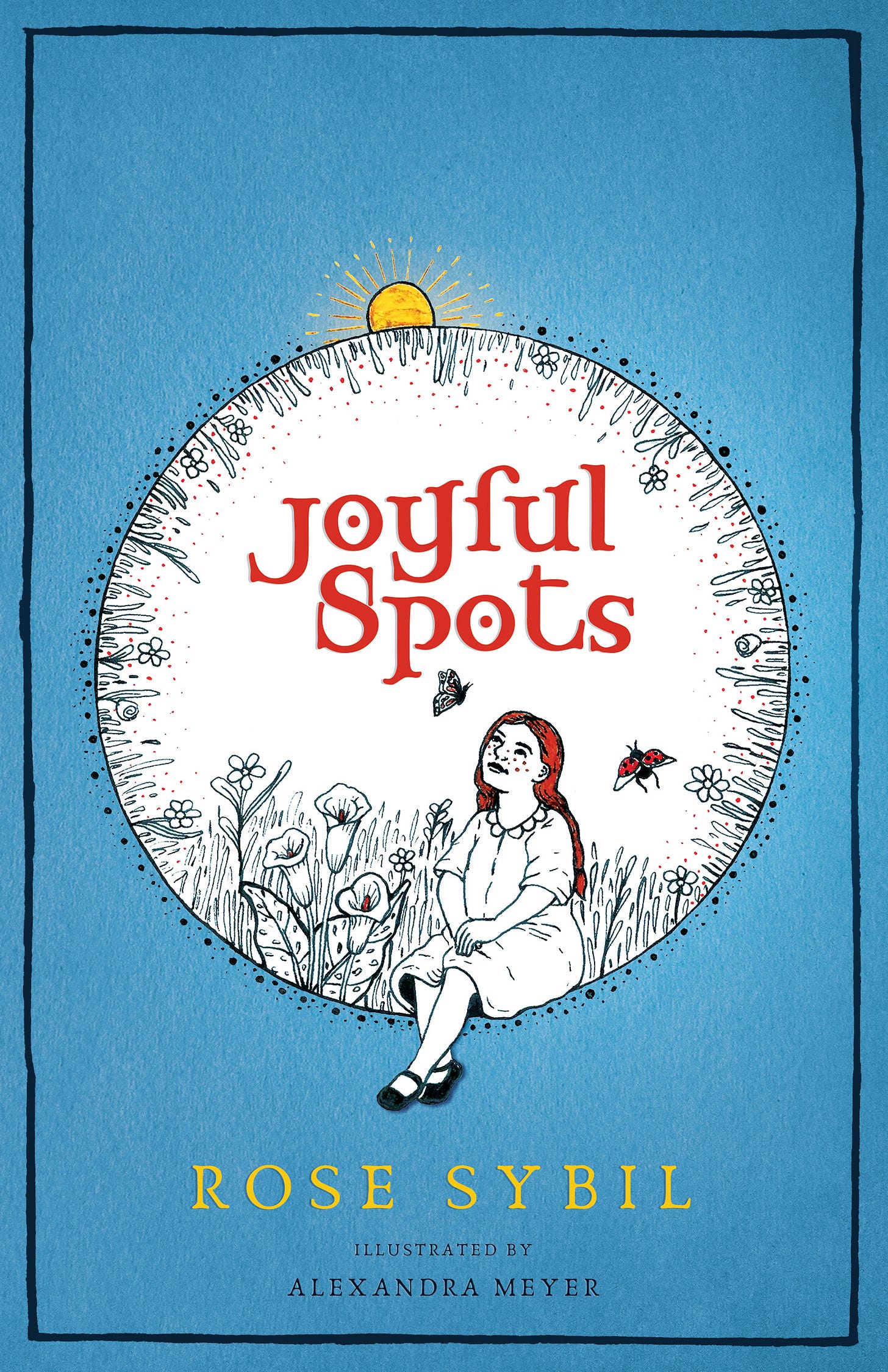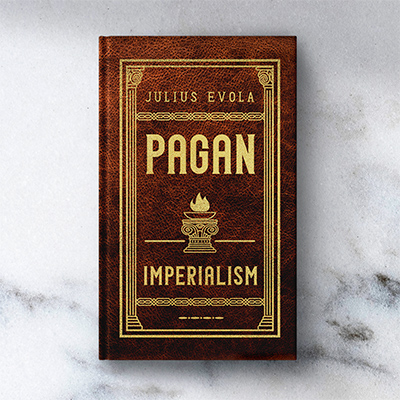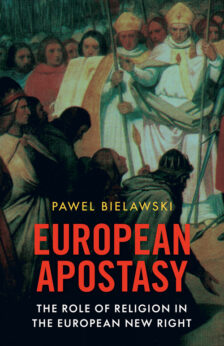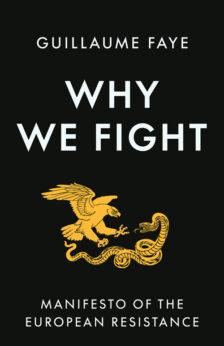Myths hide real events within their symbolism, and by doing this, they breathe life into the symbol, allowing culture to flow through the collective subconscious. Simulacra are made by using symbols without adding another layer to their meaning. Every story, whether fictional or not, needs to have real events at its core, something the symbolism is based on, to convey its intended moral. Without this, it risks damaging both the psyche and culture. It strips the symbol of its vitality instead of contributing to its regeneration. Symbols serve as a bridge between a people and the living absolutes, carrying the experience of the interaction between them for generations.
Symbolism and myth are a perfect foil for understanding how objective reality relates to living absolutes. A symbol acts as an intermediary between a living absolute and our objective experiences of it over generations, which is why the sun or a river have different symbolic meanings to different ethnoses even if some commonality. Symbolic similarities come from experiencing the same living absolutes, while the differences are just as important because they hold the interplay of unique experience of an ethnos. Symbols only devolve into simulacrum when the objective experience becomes disconnected from its multigenerational relational experience to the absolute. Tradition, culture, or origin myths (although I am not fond of focusing solely on origins without considering the ongoing nature in a living chain) represent the living, evolving context passed down through symbolic expressions of real experiences.
Too often, literature loses the connection between the lesson learned and the real experience it was learned from. Nowadays, many work backwards by choosing a lesson or moral they want to promote and then build a fable around them. This is similar to how symbolism is used today — without reintroducing it into a living, ongoing chain. It is treated more like a snapshot of its universal quality, but this actually kills the true essence of what the symbol represents, rather than capturing it. The subconscious can sense the difference between meaningful symbolism and a hollow story where the moral feels detached from real, significant experiences, hidden within and contributing to its symbolic value.
The universal quality of a living absolute arises from countless experiences with the essence of that entity. The differences between these experiences are just as important as the similarities, and this is where people often go wrong with comparative mythology. The underlying life force or God is an ultimate, unchanging entity, but the gods themselves are living, evolving entities that transform alongside natural and celestial living absolutes. Symbolic or mythological shifts, over long spans of time, reflect the spirit of the people who hold them, as they become new states of being. The gods are reincarnated through these people, and significant events can even fracture and change how the god is expressed and its spiritual standing.
You can see the changes in a god as unique to the changes in a people as it spreads. This is why it made sense to me that Cybele, later known as Magna Mater, was a fractured form of Leto. It also explained why the fall of the Heroic Age, with its pantheon emphasizing the Apollonian line, gave rise to Cybele through the misfortunes that befell Andromache with the fall of Troy. Apollo, in his origin as Rudra, was a complex and dynamic being, but in the post-Heroic, Olympian pantheon, this ancient spiritual entity fractured into a more superficial version of Apollo and the birth of his brother (part of himself), Dionysus. This is also part of why Magna Mater is considered the healer of Dionysus’s madness. The myths surrounding these pivotal events are both literal and symbolic. The exact storyline is not literal, but that is because it rippled out symbolically and mythologically — this is how formative events and culture are best transmitted through language. It is not an either/or situation because the interplay between the physical and the spiritual mirrors the interplay between event and symbol.
Myth is a true form of history in that it transmits not just the events, but the deeper lessons behind them — something far more meaningful than merely hoarding raw data like dates, names, and literal occurrences. History never interested me much when I was younger because it focused too much on solidifying these superficial aspects of experience, almost like a type of hoarding that diminishes the essence of what it is documenting. Ernst Jünger spoke about this in relation to still-frame photos, describing them as too literal — a snapshot that disconnects all context and the observer’s perspective, leaving us with a hollow relationship to reality. History becomes the ultimate simulacrum when it is studied in isolation, rather than being paired with art and myth surrounding the events themselves that give depth of understanding to the subconsciously lived experience. Art and myth reflect the cultural and spiritual experience of the time and its formative effects on the people. They are a window into the subconscious memories of a people and how the events related to the future and past, not just a linear progression.
When writing both fiction and non-fiction, we continuously cause simulacra that drain the meaning from the symbols we use, missing the intended literal moral because the symbols are disconnected from the processes and experiences that gave them their meaning. Unless real experience is symbolically woven into the story, it detracts from the living chain or life force of the symbol, which is why we have gradually entered an era dominated by simulacra. It is not that we are bringing too much of the subconscious or unconscious mind into the conscious, but rather that we are undermining symbolic meaning and communication by subconscious methods, hollowing out the manner in which we think and relate to others and reality. Whereas folklore and myth have always conveyed much deeper truths than literal stories. Since it is difficult to explain this, I will use my first published children’s book, Joyful Spots, as a case in point.
The literal story conveys the conscious, intended message of passing down traits through a family line, reincarnation, and the idea that death is eased by new life. However, within that story lies a hidden, symbolic narrative that adds depth. The subconscious mind can pick up on this in fiction, which contrasts sharply with modern fiction that tends to focus purely on consumptive entertainment or a direct, linear moral only speaking to the conscious mind disjointed from the subconcious. The use of personal symbolism — unique to the moral experience — breathes life back into the meaning of the symbols, rather than stripping them of meaning without contributing anything. This is how true symbolism avoids becoming a simulacrum.
The literal story is about a girl and her mother discussing her freckles, her grandfather coming to visit and mentioning how they remind him of his late mother, showing the girl a picture of his mother in the hallway, and then taking a walk outside to the garden, where he asks her about her favorite flower — which just so happens to be his late mother’s favorite as well. The literal moral is about the joy of continuing generations and how family traits live on. However, though the story is fiction, the deeper moral is actually more closely tied to the hidden story than the literal one. This hidden layer adds depth to the emotional experience of reading it because the subconscious and unconscious mind connect to real experiences in the collective subconscious, iterating the way in which we consciously reason to these deeper layers of our being.
Every aspect of the artwork I contracted for the illustrations was carefully sketched with specific details to convey symbolic value, because the visual aspects are just as important as the literary ones — storytelling is meant to be a holistic experience. The hidden story is about how new life helps ease the loss of deceased loved ones, allowing them to live on. While my literal firstborn is a son, not a daughter, the little girl in the story does not represent my children. However, I am the mother in this story. The story begins with the girl and her mother looking into a mirror, where the girl notices that she has freckles, but her mother does not. In the hidden story, my late grandmother is the freckled girl. The mirror symbolizes both a reflection of the past and the reversal of roles at the end of life. I cared for my grandmother every day during the year leading up to her death, mothering her in the same way she had mothered and nurtured me when I was little.
The house represents a walled-off, man-made space — a personal holding of grief, yet disconnected from the natural cycle of life and death. The grandfather enters, opening the door to a new day. Symbolically, the sun represents the new day of my son’s birth, illuminating the freckles on the girl (his great-grandmother) that he shares. My father’s return with the sun and the opening of the door symbolizes his ability to release grief through new life. The hallway acts as a portal between life and death, symbolizing the recognition of a life once lived while showing the girl a still frame of herself trapped in a stasis of past memory. As they move into the garden, it signifies being able to reenter the reincarnation cycle and release the stasis of death with new life.
At the end of the story, the girl is led to calla lilies, my grandmother’s favorite flower and it is also the namesake of my second child. Representing the birth of my daughter with the lily does not just invoke its cultural symbolism but adds back — even if infinitesimally — to the cultural symbolic value of the flower, rather than just taking from it. The new lives in this book are depicted through symbols, with the most attention given to each person based on their closeness to death and the afterlife. This is why the grandfather spends the most time with the girl, and the girl being dead is the focal point of the story. The bees and butterflies, as pollinators, serve as background symbolism for the emphasis on new life and negative entropy. The mentioning of ladybugs instead of just adding them to background animation is to emphasize predators that benefit gardens, and, as a child, I always noticed their spots in relation to freckles, often asking my grandmother why I did not have as many as her. While the conscious reader may not decipher this hidden symbolic story, deeper layers of the mind certainly do. Fiction should always weave in layers of real, lived experience that deepens the symbolic meaning.
When writing children’s books, it is important to visually present the symbolic story in unison with the literal one — this is a new style I am developing. It shapes the way they understand the world, not just through the morals of the story but through the myths and symbols embedded in it. Without this, the morals become mere conscious arguments alongside hollowed out symbols, already diluted into a simulacrum, instead of offering a deeper connection to reality. It cuts them off from understanding the deeper nuances of communication in the subconscious mind utilizing symbolism and myth, leaving them directionless and easily swayed with no anchoring into how they understand reality. Constant exposure to consumptive literature harms children’s ability to receive cultural transmission.
It is essential to recognize the importance of symbolism in authentic identity. We must continue the living chain of meaning and cultural transmission by not merely taking from ancient symbols in our literature, but by honoring them with new experiences that breathe fresh life into them with our storytelling. The meaning of a symbol for a people is a layering of continual experiences with one of the living absolutes that the symbol represents. Each iteration adds new meaning incrementally to the lived experience of that people across generations, transmitting the meaning of that living symbol to each new generation through the stories tied to it. To continue growing and living, our symbols must not be hollowed out or remain stagnant in past forms. Like legacy, they must be forged anew — rooted in the past, yet imbued with new meaning through our lived experiences.
Order Rose Sybil’s children’s book Joyful Spots here.







